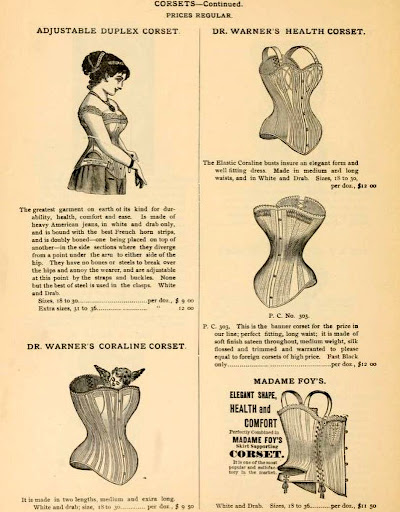The History of Corsets and Female Empowerment
October 14, 2022
First coming around in the 1500s, corsets have been a recurring fashion trend for over 500 years.
The idea of corsets first came about with the separation of the dress. The skirt and bodice were first split off into two pieces in Europe during the late 1400s and early 1500s. This is when the solid undergarment known as a corset was introduced.
Created to obtain the image of a small waist and stiff body, corsets were originally named “whalebone bodies” as they had been made out of rigid materials such as whalebone, horn, and buckram. The corsets were fashionably long, stopping just above the pelvic bone. Catherine de Medici can be credited for this specific style of undergarment as she was the first to introduce the production of true corsets to France.
While they were once the representation of wealth and high social status, as soon as they were adopted by the middle class in the 17th century, the restricting style of corsets were so extremely confining that they quickly became the epitome for female oppression.
As time went on, the demand for women to constantly wear corsets no matter the activity began to enrage them. Women began to feel a sense of anger as they were forced to wear restricting garments solely to appeal to the male gaze. Since their opportunities were already reduced down to a very slim picking, usually only involving taking care of the kids and the house, the corset only further restricted what they were able to do.
However, this rage did not stop the use of corsets, it only created a demand for a less restrictive style of them. The common corset style, known as the Victorian style, was invented by Joseph Cooper in 1848. This corset had a front-fastening busk that allowed women to take the corset on and off without lacing the back. Although this style was still difficult to function in, it was much more comfortable and movable compared to the traditional, yet rougher, iron version.
When interviewing Pitman High Sophomore, Jade Xiong, I asked, “Do you believe corsets are a staple for female oppression or empowerment?”
“I believe they were once considered the image of female oppression. I mean, they were so restricting but were required to be worn solely to appeal to men. But I think overtime it’s strayed away from that and created its own image that represents feminism and the power of being a women.”
“Do you think corsets should stay a fashion trend?”
“I do! I think the idea of corsets has become somewhat sexualized as that’s how it was portrayed back in time, you know, it was used to appeal to men, so a lot of the older generation don’t agree with younger generations wearing them. But I think they’re cute and fun, and if worn correctly and not consistently then they aren’t as damaging as they once were.”
Corsets stayed relatively popular all the way up to the 1900s, going through multiple different style phases. However, when World War I approached, countries around the world lost a majority of their men to the battlefield, forcing women into the workforce. Around this time is when corsets lost favor in fashion.
During this time, all-in-one garments were invented. These corsets were a combination of both a brassiere and long gown to create an all-over, looser silhouette.
Tighter, more authentic corsets weren’t introduced again until Christine Dior reintroduced them in the late 19th century. Following Dior’s corset resurrection, Jean Paul Gaultier was the first to transform the corset into something worn as outerwear rather than undergarments when he invented his first corset dress in his 1983 Dada collection.
The corset comeback era of the late 1900s kickstarted the revolution of female empowerment when Vivienne Westwood introduced her own style of corsets alongside Gaultier. This arc in time focused on steering away from the image of female oppression and into something that centered more around feminism.
Ever since women were able to take back the idea of corsets they have been a prevalent staple in the fashion industry. From being worn by A-list celebrities, to Pitman high students across campus, corsets have made a full return as the symbol of feminism and female empowerment.
